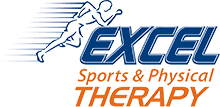Feeling shaky and unstable. Having the feeling that the room is spinning around you. Blurry vision when you move your head in certain ways. All these symptoms are signs that you have vertigo.
Unfortunately, vertigo is a common problem, and this is especially true for older people. In fact, one study found that more than 20% of adults suffer an episode of vertigo annually. Physical therapists can treat your vertigo. There’s actually an entire realm of physical therapy called vestibular rehab specifically to help treat vertigo and dizziness.
These three physical therapy techniques are common in vestibular rehab for vertigo
There’s no set formula for the physical therapy methods used to treat vertigo. This is because your physical therapist will personalize your vestibular rehab plan to fit your specific needs. However, there are some techniques that therapists commonly use in such plans.
Some of these techniques include:
- Gaze stabilization exercises — These exercises are designed to help counteract the visual issues vertigo can cause. Often, gaze stabilization exercises (GSEs) involve inducing the symptoms of vertigo. Then, you’ll do movements that your physical therapist has shown you to refocus your eyes. This technique can be very helpful for people worried about falling due to vertigo. A study of GSEs shows that 90% of the patients who did them reduced their risk of falling.
- Epley maneuver — This technique is also called canalith repositioning, and it’s a common method of treating benign paroxysmal positional vertigo (BPPV). Using specific head movements, the Epley maneuver helps remove otoliths from your semicircular canals. The Epley maneuver is extremely effective for BPPV. A study on this technique reveals that it has a success rate of more than 95% for BPPV patients.
- Balance exercises — These exercises seek to help you strengthen muscles that help you balance. They also give you the chance to practice balancing, which can lead to improvements. One example of a balance exercise is standing on one leg for a set length of time. These exercises are much more effective than people might think. Medical researchers report that 67% of patients who used balance exercises had significant balance improvement.
Find physical therapy for vertigo at Excel Sports & Physical Therapy
Are you ready to try physical therapy for your vertigo? Our vestibular rehab specialists at Excel PT are here to help you get the effective care you need. We offer free screenings that can pinpoint the root cause of your vertigo. Our team can then build you an individualized vestibular rehab plan designed to reduce your symptoms and improve your balance.
Too dizzy to leave home for help? No problem! We offer therapy services that can help you with vertigo from your home, such as at-home care and virtual therapy.
Contact our team today for more information about our vestibular rehab services or to schedule an initial appointment.






